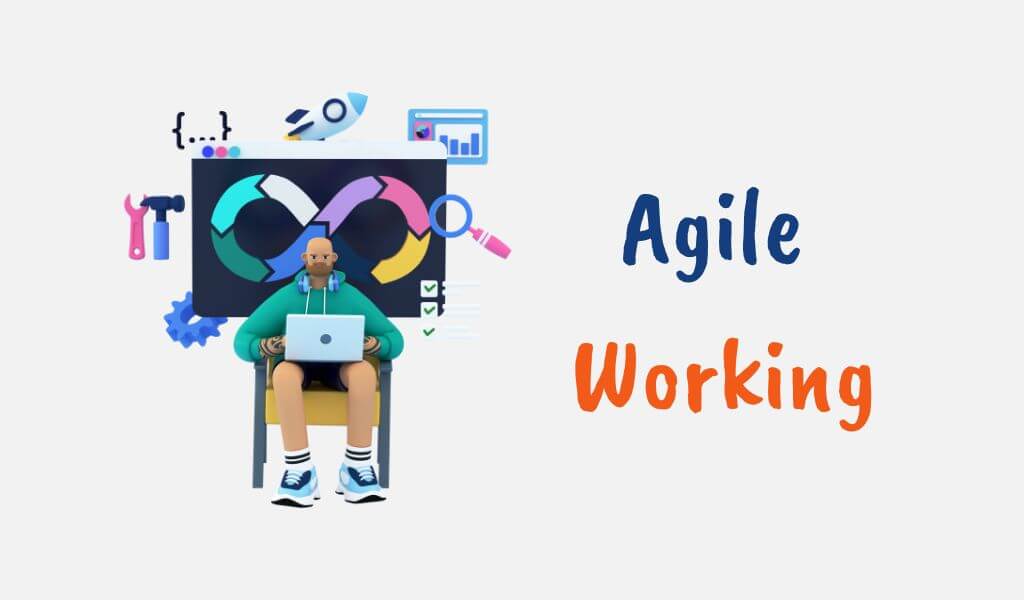In today’s fast-paced world, the idea of work is evolving rapidly, pushing agencies to rethink standard models. The rise of agile and versatile working arrangements provides emerged as a reaction to the demands involving modern employees plus the need for businesses to continue to be competitive. These strategies not only enable individuals to take control of their particular work conditions and also foster a lifestyle of innovation plus collaboration, essential regarding success in typically the ever-changing landscape.
Embracing alter is not just a trend; this is a necessity for organizations looking to thrive in typically the 21st century. By adopting agile techniques and flexible working practices, companies can easily better accommodate varied needs, enhance staff wellbeing, and in the end drive productivity. This particular article delves serious into the detailed aspects of agile and versatile working, exploring there are many benefits, key strategies for implementation, and how they can redefine success in the particular workplace. Whether a leader looking to adapt your company culture or an employee seeking even more autonomy, learning the dynamics of these models is crucial for navigating the potential of work.
Understanding Agile and Flexible Functioning
Snello and flexible working are usually concepts that include gained significant traction in modern workplaces, redefining how companies operate and just how personnel engage with their particular work. Agile doing work refers to a new project management technique that emphasizes versatility, collaboration, and responsiveness to change. It encourages teams to work in iterative cycles, allowing them to be able to adjust their tactics and outputs structured on feedback and even evolving requirements. This approach fosters an energetic work environment where experimentation and advancement thrive.
On the other hand, flexible performing encompasses a broader variety of practices that will provide employees together with the freedom to pick where and how they function. This may include remote work, flexible hrs, and compressed workweeks. By allowing personnel to tailor their work arrangements to better fit their own personal lives, businesses can enhance career satisfaction and work-life balance. Flexible operating can lead to be able to a happier staff, that is essential intended for attracting and retaining top talent.
The area of agile and flexible working produces a powerful framework intended for organizations seeking to navigate the complexities of today's business landscape. Companies that embrace both aspects can cultivate a new culture of continuous learning and improvement, driving productivity plus innovation. By understanding the nuances associated with agile and flexible operating, organizations can improved implement strategies that meet the requirements of their personnel while achieving their own corporate goals.
Great things about Snello and Flexible Operate Models
Agile and versatile work models provide numerous advantages in order to both employees plus employers. For staff, the ability to be able to choose where and when to function prospects to greater work satisfaction and a new better work-life harmony. This flexibility enables individuals to tailor their work environments to be able to their personal demands, ultimately leading to enhanced engagement and inspiration. Companies that provide these types of options often get that they turn out to be more appealing to best talent, as applicants increasingly prioritize flexibility in their job queries.
By the employer's viewpoint, adopting agile functioning practices can substantially enhance productivity. Souple frameworks encourage quick decision-making and adaptability, enabling teams to respond quickly to changing industry conditions or task requirements. This responsiveness not only improves efficiency but in addition fosters a lifestyle of continuous improvement and innovation. Furthermore, flexible work arrangements can lead to lower in business costs, as firms might need less physical work place and will potentially reduce costs associated with sustaining a traditional place of work.
Additionally, agile and flexible work models help employee wellbeing, which usually is essential intended for long-term organizational achievement. By promoting some sort of culture that values flexibility, organizations can reduce burnout and even stress among all of their staff. Research demonstrates that employees working in souple environments report larger levels of satisfaction and lower proceeds rates. This positioning of employee wellness with organizational targets produces a powerful synergy, which makes it clear of which embracing these modern work models is usually not just a new trend but an organized advantage in today's competitive landscape.
Implementing Adaptable Working Strategies
To successfully implement flexible performing strategies, organizations need to first assess their particular current policies and cultural readiness. This requires open discussions using employees to recognize the requirements and personal preferences. Learn more should consider gathering feedback through surveys or target groups to gauge employee sentiment and even identify potential obstacles to flexibility. This assessment is important intended for tailoring a flexible operating model that aligns with both organizational goals and staff expectations.
Once the evaluation is complete, organizations can produce clear plans that outline exactly how flexible working may operate within the particular organization. This includes determining parameters for instance universal remote work options, flexible hours, and interaction protocols. Transparency throughout these policies is essential to ensure that all employees understand their options in addition to responsibilities. Providing education and resources in order to support employees in this transition will furthermore foster a steady implementation process.

Finally, continuous evaluation with the adaptable working strategy is usually necessary to make sure its success. Organizations should establish metrics for measuring productivity, staff satisfaction, and general effectiveness of typically the flexible arrangements. Typical check-ins and alterations based on opinions will help keep a dynamic job environment that stimulates agility and adaptability. By committing to constant improvement, companies can create a flexible working lifestyle that benefits equally employees and typically the organization as a new whole.
